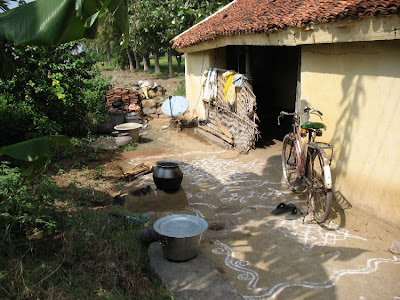Pongal was originally a Festival for the farming community but nowadays its celebrated by all. It follows the solar calendar and is celebrated on the same days each year. Pongal’s astronomical significance is that it marks the auspicious beginning of Uttarayana, the Sun's movement northward for a six month period. All important events are scheduled during this season. The festival celebrates leaving behind old way of doing things, be it relationships, money matters or health habits.

The Sun governs health; both physical and mental, self-esteem and proper functioning of the heart and vision. During Pongal, i.e. the Vedic Winter Solstice, the Sun moves into Capricorn forming an auspicious configuration with Jupiter, and remains in one sign for thirty days. Good times continue until July 16th, whilst the sun is in Aquarius, Pisces, Aries, Taurus, and Gemini.
Four festivals are celebrated at Tiruvannamalai (and throughout Tamil Nadu) during the four consecutive days which comprise the Pongal Festival. 'Bhogi' on January 13th, 'Pongal' on Jan 14th, 'Maattuppongal' on Jan 15th, and 'Thiruvalluvar Day' on Jan 16.
On Bhogi old clothes and materials are thrown away and set on fire, marking the beginning of a new life. Spiritually this is the time for a spiritual overhaul and to get ready for higher things. The second day, Pongal, is celebrated by boiling fresh milk early in the morning and allowing it to boil over the vessel – a tradition that is the literal translation for Pongal. People also prepare savouries and sweets, visit each other's homes, and exchange greetings. The third day, Mattu Pongal, is one in which one is meant to offer thanks to cows and buffaloes, as they are used to plough the lands and provide us milk to drink. On the last day, Kanum Pongal, people go for picnic, trips and excursions.
Pongal also signals the end of the traditional farming season, giving farmers a break from their monotonous routine.
Thiruvoodal Festival
An important festival connected with Arunachala occurs during the time of Pongal and is known as the Thiruvoodal Festival. This Festival is celebrated on January 16th and is re-enacted inside the compound of Arunachaleswarar Temple, on the streets delineating the perimeter of the Temple, and on the girivalam pathway itself, by iconic representations of Shiva/Parvati in order to convey moral and social truths to their devotees. To read more click on these links here and here.
Surya Relevance
In Shaivite theology, Surya is said to be one of eight forms of Shivam (Astamurti). He is said to be of Sattwa Guna and represents the Soul, King, highly placed persons or Father. The Sun God is considered as the life-giver, (Pranadata) of the entire Universe. Surya is essential for life and the witness (Sakshi) of all actions. The Sun is the 'indicator of the soul,' and indicator of our ego, honour, status, fame, heart, eyes, general vitality, respect and power. He has hair and arms of gold. His chariot is pulled by seven horses, which represent the seven chakras.

He represents soul, will power, fame, the eyes, general vitality, courage, kingship, father, highly placed persons and authority. And has the following associations: day Sunday, number one, food grain Wheat, colours Copper or Red, metals Gold or Brass, gemstone Ruby, direction East and the season Summer.
Worship of Sun, which is all power, strength and glory, is beneficial for people in difficulties or who aspire for sound health, prosperity, good eyesight, strength, courage and success.
To read Arunachala Surya mythology go to this link here.





















